Introduction
This article identifies the barriers employees face in realizing their true potential in digital agencies and shares ways to overcome them through coaching so that team members not only meet expectations but drive agency growth.
Every person is talented in something. When this talent aligns with agency requirements for a role, one gets hired.
But unfortunately, this talent doesn’t always bring the results that are expected of them.
Hello, underperformance.
As an agency CEO or recruitment lead, you may bring the best people on board, but what are the chances that an employee’s true potential is realized in your organization?
It’s frustrating to see skilled employees not fully delivering on their promise, leaving projects delayed, clients dissatisfied, and company’s growth restrained.
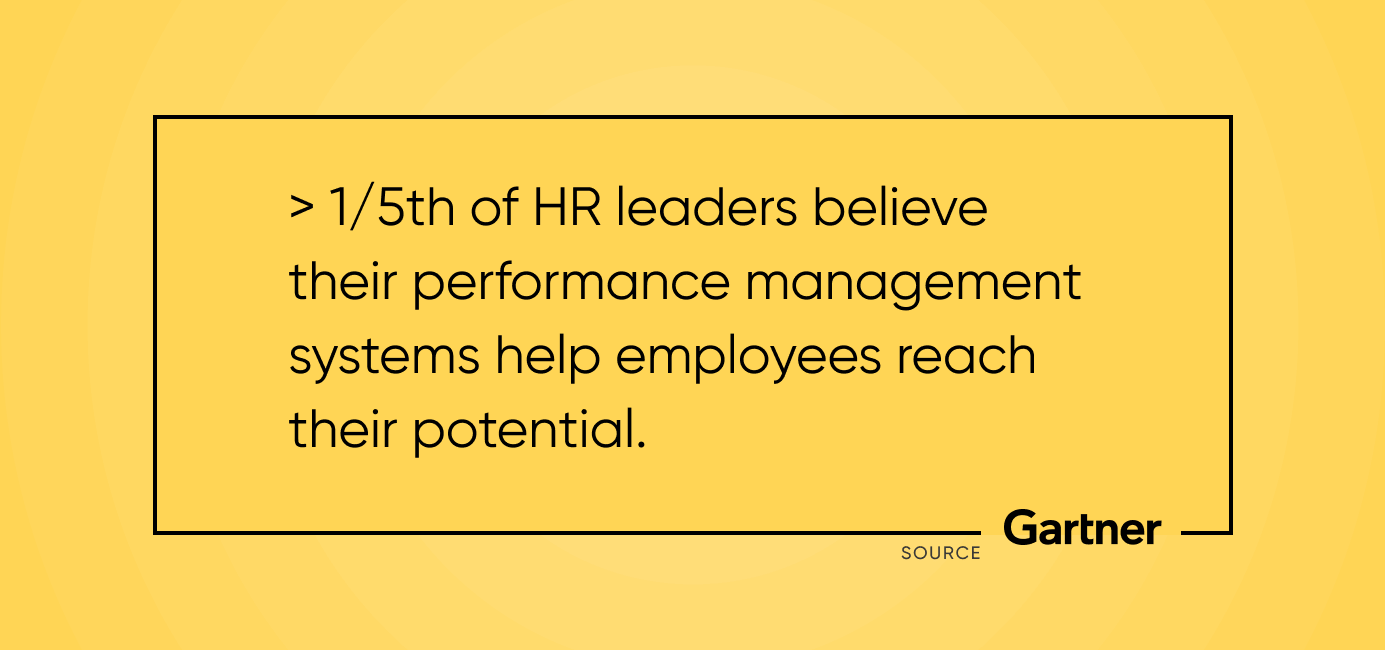
When employees aren’t reaching their full potential, it affects the entire organization.
There's good news: by understanding the reasons behind this underperformance and taking proactive steps, you can unlock the potential that’s waiting to be realized.
What Is Unrealized Potential In Digital Agencies?
Unrealized potential in digital agencies occurs when skilled and talented individuals don’t fully deliver on their capabilities.
Despite their qualifications and experience, they may underperform due to reasons that can be personal, professional, or a combination of both.
According to a study published in Gartner, less than one-fifth of Human Resource leaders think their performance management systems help employees reach their potential.
This disconnect can cause stress and burnout in employees as they face challenging tasks in projects.
If remained unchecked, it can eventually disrupt project timelines, dent client satisfaction scores, and harm the agency’s overall health and financial growth.
By identifying and addressing the root causes, agencies can create a work environment where talent is fully utilized, leading to successful projects and satisfied clients.
How Can Agency Leaders Identify Signs Of Unrealized Potential
As an agency leader, being able to spot the signs of unrealized potential in your team is crucial for maintaining high standards and achieving business goals.
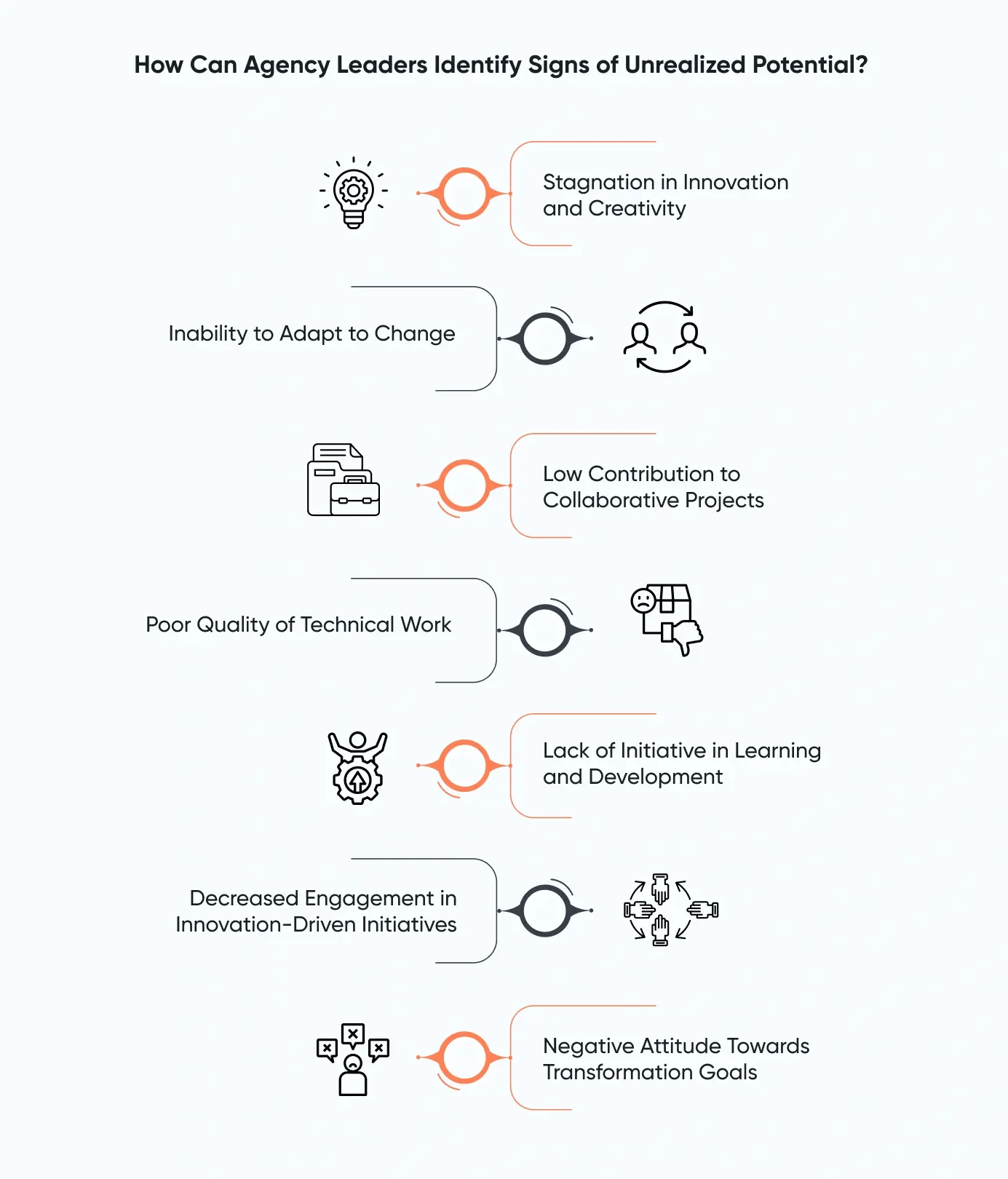
"Even if these individual signs are overlooked by agency leaders or dismissed initially as idiosyncrasies associated with talented people, over time, the consequences start surfacing. Teams and the organization as a whole start hurting," said Mridula Ujjwal, Director of People Transformation at Axelerant.
Stagnation In Innovation And Creativity
If you notice a lack of new ideas or innovative solutions from your team, it could be a sign that their potential is not being fully tapped.
According to a report by McKinsey, companies that excel in innovation and creativity report 67% organic revenue growth as compared to 37% of companies that do not.
In environments that thrive on creativity, an inability to contribute fresh perspectives or propose novel approaches can significantly hinder progress.
Inability To Adapt To Change
Employees who struggle to adapt to new tools, methodologies, or workflows can hinder the team’s overall agility.
In a field that demands constant evolution, failure to keep up with industry trends or resistance to adopting new technologies can be particularly detrimental.
They usually operate from a space of being a “knower” rather than a “learner.”
And that causes them to develop a fixed, stagnant mindset of doing things as they had always been done.
Low Contribution To Collaborative Projects
A project’s success is heavily dependent on how well people collaborate with each other in digital agencies.
Gartner research shows that when employees collaborate effectively, their individual performance increases by 20.6%.
Employees who don’t actively participate in team discussions, miss collaborative deadlines, or contribute minimally to group efforts may be underutilizing their potential, which can disrupt project timelines and outcomes.
Poor Quality Of Technical Work
High error rates in coding, frequent bugs, or failure to meet technical standards are red flags.
Precision and quality are critical in technical work.
Consistent issues and deteriorating work quality may be a red herring in terms of performance.
Lack Of Initiative In Learning And Development
The digital world is constantly changing, and staying current with emerging technologies is essential.
Employees who don’t take the initiative to upskill or engage in learning opportunities may fall behind, affecting both their performance and the team’s overall success.
The consequences of such lapses usually show up later when the signs of underperformance turn alarming.
Decreased Engagement In Innovation-Driven Initiatives
Hackathons, brainstorming sessions, and innovation sprints are common in digital agencies.
Employees who are disengaged or absent from these initiatives may lack interest or motivation, which can directly impact the agency’s ability to innovate.
Negative Attitude Towards Transformation Goals
Resistance to change and a negative attitude towards new initiatives can be harmful.
Employees who are cynical or pessimistic about transformation efforts can create a toxic environment, reducing overall team morale and productivity.
Underperformers who once had been highly productive and creative can also be dismissive of other people's perspectives, often exhibiting signs of arrogance.
This especially shows up in a toxic way for people in leadership positions. The people under them start experiencing a dominant, authoritative leadership. Since the leader is stagnant and unwilling to grow, they actively discourage experimentation and risk taking.

It's important to understand that anyone at any level can be affected by underperformance—from a fresher out of college to a C-suite executive with a track record of success.
Recognizing these signs is the first step in addressing the issue and helping your team members achieve their full potential.

What Causes This Underperformance?
“When talented team members begin to underperform, there are often underlying reasons, whether personal or organizational, that contribute to this gap,” said Mridula.
The coaching journey can only begin after realizing the origin of the issue for team member(s).
Individual Reasons Behind Underperformance
On an individual level, personal challenges can significantly impact a team member's performance.
Life outside of work can bring stress, distractions, or emotional burdens that interfere with an employee's ability to focus and deliver at their best.
For instance, a team member going through a difficult period at home may struggle to maintain the same level of productivity and creativity they once did.
“I once coached this person who was extremely talented. But their managers were frustrated with their performance,” Mridula shared.
Mridula’s client was getting repeated feedback from their team members on a lack of communication, and it had started impacting their deadlines, reputation at work, and causing project delays.
"When I started working with them, we discovered that this person would only communicate once the work was done from their end. And never before that because of some negative past experiences from personal life,” she shared.
"So I worked with them on proactive communication and solving those blockers that stopped them from communicating at the right time, and after a month or two, they were on track for promotion," said Mridula, betraying a hint of a smile.
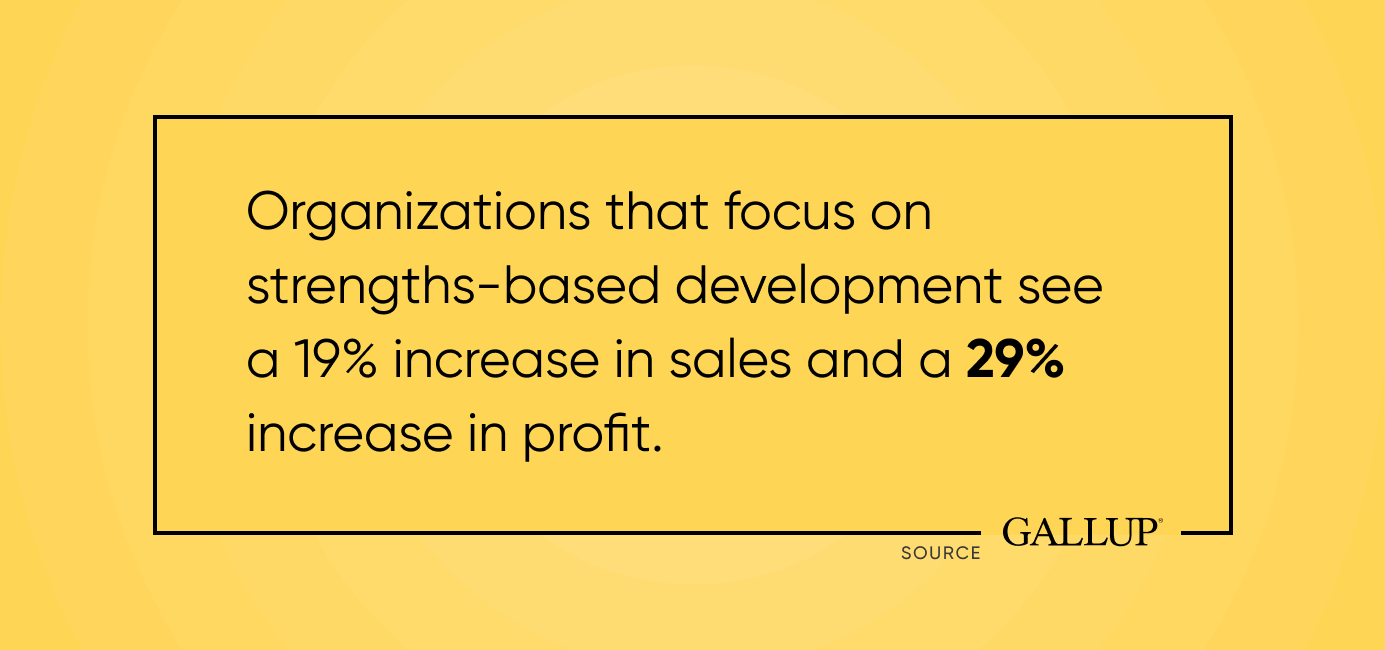
Organizational Reasons Behind Underperformance
Organizational culture plays a crucial role in either fostering or stifling employee performance.
Transactional Recognition And Reward
In some organizations, recognition and rewards are purely transactional, where employees are consistently rewarded for doing the same tasks repeatedly because they generate business.
While this approach might yield short-term success, it can lead to long-term stagnation, as they don’t feel the need to branch out in new directions.
Lack Of Learning And Development Opportunities
Organizations that fail to prioritize continuous learning and development often see their employees' skills become outdated.
When there is an absence of opportunities for growth, talented individuals begin to feel their skills are no longer valued or relevant. Their performances can automatically plateau.
This lack of progression not only affects individual morale but also impacts the overall effectiveness of the team.
Our People Transformation services at Axelerant address these issues by focusing on cultivating continuous growth and development within organizations.
Lack Of Clear Expectations
When employees aren’t sure what is expected of them, they may struggle to focus their efforts and underperform as a result.
Clear expectations are critical for guiding employees towards success. Without a well-defined understanding of their role and responsibilities, employees can become confused and directionless.
This lack of clarity can lead to inconsistent performance, as employees may prioritize the wrong tasks or fail to meet key objectives.
Inadequate Resources And Tools
Employees may have the skills but lack the necessary tools or resources to perform their tasks effectively.
When the right resources aren’t available, even the most capable employees can find themselves unable to meet their potential.
This can lead to frustration and a sense of helplessness, as they are unable to achieve their goals despite their best efforts.
Poor Leadership And Management
Ineffective leadership can result in unclear direction, poor communication, and a lack of support, all of which can hinder an employee’s performance.
Leaders play a pivotal role in shaping the work environment and setting the tone for the team. When leadership is lacking, employees may feel unsupported or unsure of their role within the organization.
This can lead to disengagement, decreased morale, and ultimately, underperformance.
Strong leadership is essential for providing guidance, fostering a positive work culture, and ensuring that employees are aligned with the company’s goals.
Limited Opportunities For Advancement
When employees see no path for growth within the company, their motivation can decline, leading to lower performance levels.
Career advancement is a key motivator for many employees, and when this opportunity is absent, it can lead to a sense of stagnation.
Providing clear pathways for advancement and recognizing employees’ contributions are crucial for maintaining motivation and encouraging high performance.
When employees see a future for themselves within the company, they are more likely to stay engaged and perform at their best.

Unfulfilled Potential Can Cripple Teams
A massive research by Gallup, involving more than 1.4 million employees, 50,000 teams, and 192 organizations, discovered some startling facts about high-performing teams.
The difference between a high and a low performing team came down to rather small facts within organizations.
The most significant differentiator turned out to be this question: “At work, I have the opportunity to do what I do best every day.”
Business units whose employees chose “strongly agree” for this item were 44% more likely to earn high customer satisfaction scores, 50% more likely to have low employee turnover, and 38% more likely to be productive.
When people can’t give their best every day at work, because of unfulfilled or blocked potential, it starts to affect the agency inversely.
By Affecting Business Growth
- Delays In Project Delivery
When key employees struggle to meet their potential, projects often don’t get completed on time. This can cause a domino effect, where missed deadlines lead to rushed work, lower quality, and a backlog of tasks that further strains the team.
- Decreased Client Satisfaction
Clients rely on timely and high-quality work. When they start seeing delays and subpar results, their satisfaction drops. Unhappy clients are less likely to return and more likely to spread the word about their negative experiences, which can hurt the agency’s reputation.
- Tanking Revenue
The financial toll of underperformance is significant. Revenue can take a hit as projects are delayed or lost, and costs can rise as more resources are needed to fix mistakes or meet overdue deadlines. Additionally, the constant need to recruit and train new employees due to high turnover rates adds to the financial strain.
By Impacting Morale And Skyrocketing Attrition Rates
- Stress And Burnout Among High Performers
When some team members underperform, others often have to pick up the slack. This extra burden can lead to stress and burnout among high performers, who may feel overworked and underappreciated. Over time, this can lead to a decline in their own performance or, worse, cause them to leave the company.
- Increased Turnover Rates
High turnover rates can become a vicious cycle in a team plagued by underperformance. As talented individuals leave due to burnout or frustration, the remaining team members are left with an even heavier workload, which can further drive turnover. This cycle can be difficult to break and can weaken the overall stability and productivity of the team.
When these issues are left unaddressed, they can cripple a team’s ability to function effectively, leading to long-term consequences for both the employees and the organization.
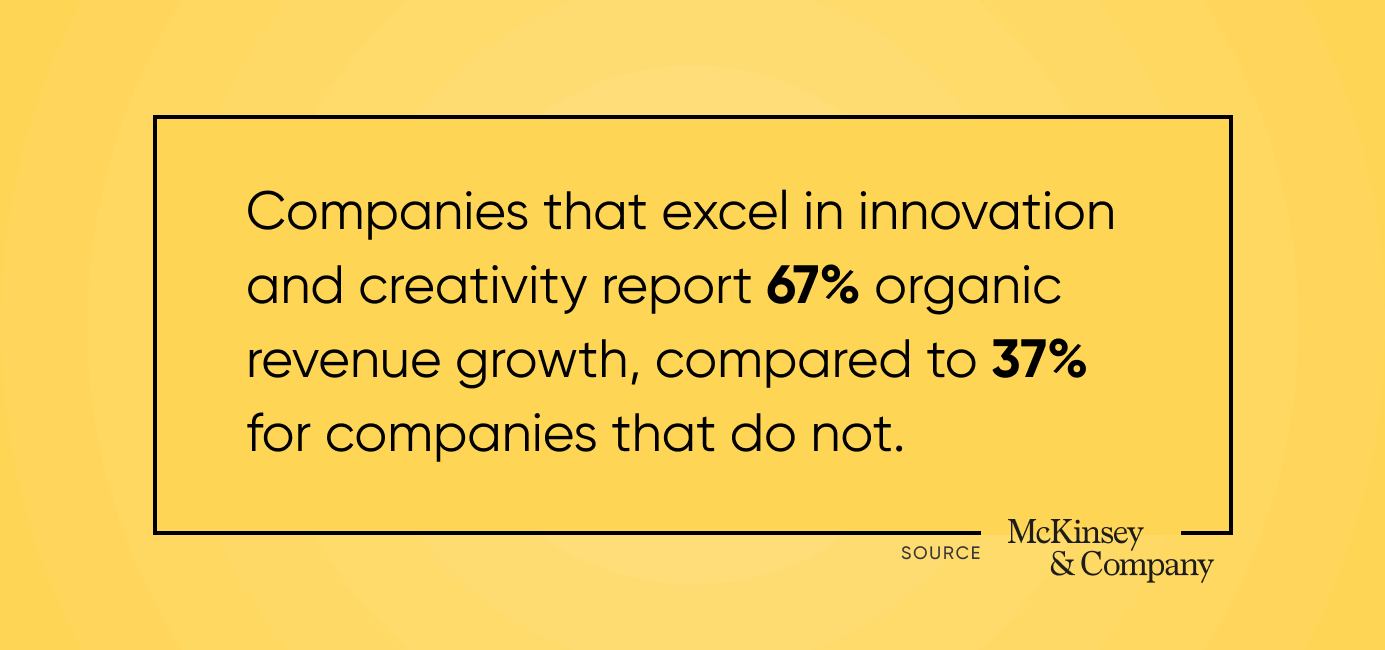
High-Performance Coaching To Realize True Potential Of Employees
Traditional performance management solutions typically involve annual reviews, standardized training programs, and a one-size-fits-all approach to employee development.
The 2019 Gartner Performance Management Benchmarking Survey showed 81% of HR leaders planned to make changes to performance management, with 82% saying performance management wasn’t effective at achieving its primary objective, and only 38% saying it kept pace with business needs.
These methods often focus on correcting weaknesses or filling gaps without considering the unique strengths and motivations of each individual.

As a result, they may not address the root causes of underperformance, leading to temporary or superficial improvements.
In contrast, high-performance coaching is more dynamic and individualized.
“A performance coach looks at a person’s belief systems, their values, background, perceptions, their attitude towards life and how they work,” Mridula shared.
High-performance coaching involves regular, one-on-one sessions where a coach works closely with an employee to identify their specific challenges, set personalized goals, and develop actionable plans to achieve them.
Benefits of High-Performance Coaching For Digital Agencies
For digital agencies, where innovation, creativity, and rapid execution are key, high-performance coaching offers several distinct advantages:
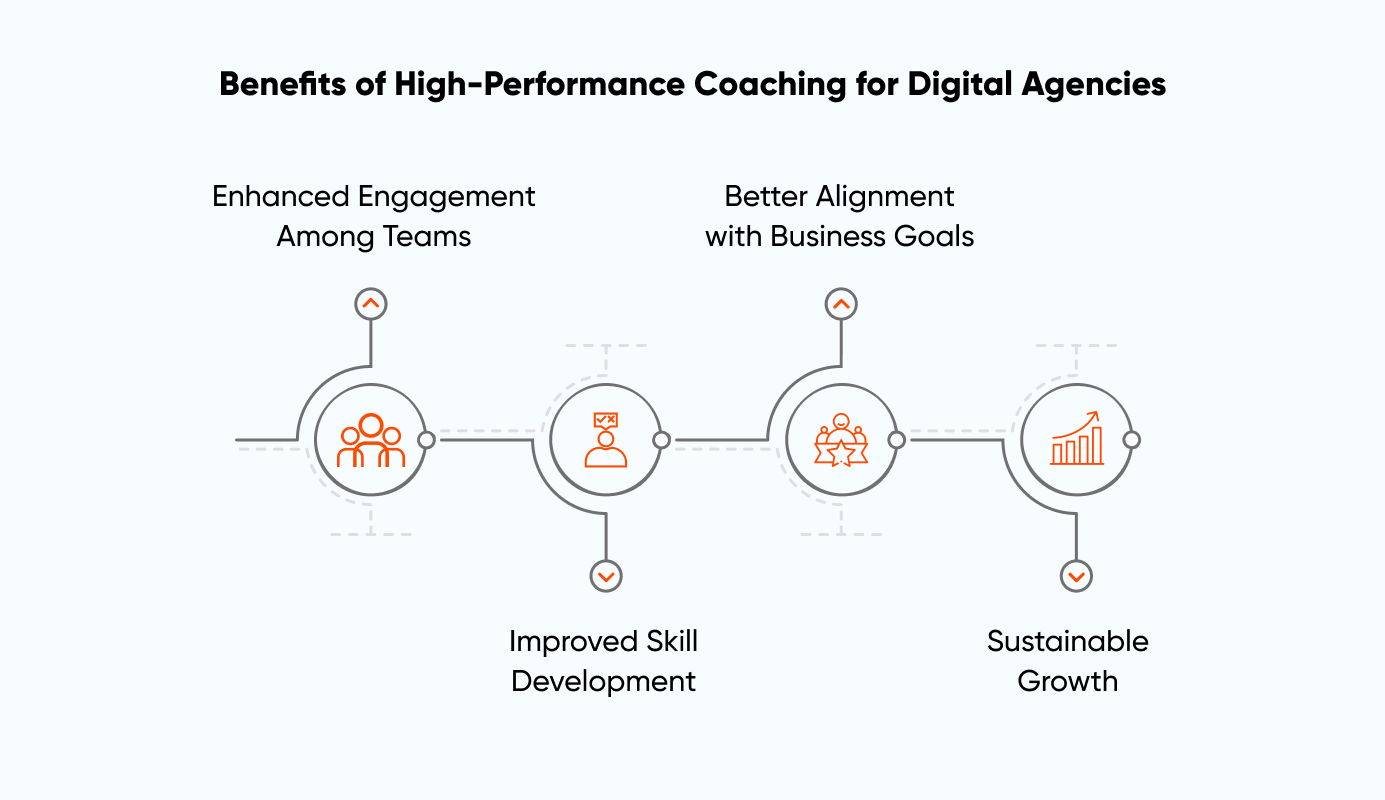
Enhanced Engagement Among Teams
High-performance coaching is all about understanding and leveraging individual strengths and aspirations. By helping employees connect their personal goals with their day-to-day work, coaching fosters a deeper sense of engagement.
When employees feel that their unique talents are recognized and valued, their connection to their work strengthens.
This heightened engagement often leads to higher productivity, as employees are more motivated to contribute meaningfully to the agency’s success.
Additionally, engaged employees are more likely to experience job satisfaction, which can reduce turnover and help maintain a stable, cohesive team.
Improved Skill Development
In a field that’s constantly evolving, continuous skill development is crucial.
A Gallup study found that organizations that focus on strengths-based development see a 19% increase in sales and a 29% increase in profit.
High-performance coaching equips employees with the tools and strategies they need to grow both professionally and personally leveraging their unique strengths.
Because unlike generic training programs, coaching is tailored to the individual, addressing specific skill gaps and areas for improvement.
This personalized approach not only helps employees excel in their current roles but also prepares them for future challenges and opportunities within the agency.
Better Alignment With Business Goals
One of the key benefits of high-performance coaching is the alignment it creates between personal and organizational goals.
Through personalized coaching sessions, employees are encouraged to see how their individual objectives can support the broader mission of the agency.
This alignment fosters a stronger sense of purpose, as employees understand how their work contributes to the agency’s overall success.
When employees are aligned with business goals, they are more committed to achieving them, which can lead to improved performance across the board. This alignment also promotes a culture of accountability, where employees take ownership of their contributions to the agency’s success.
Sustainable Growth
Dr. Jon Finn, author of The Habit Mechanic, emphasizes that our brains operate on habits, which fundamentally drive our actions and thoughts.
He argues that most traditional performance management systems fail because they don’t address these underlying habits.
To be effective, Finn suggests that performance management should shift from a knowledge-based strategy to a habit-based one, as habits are critical for achieving business goals.
High-performance coaching aligns with this habit-based approach by focusing on creating sustainable growth through the development of positive habits and mindsets.
Rather than relying on quick fixes or short-term solutions, coaching helps employees build the resilience and adaptability needed for long-term success.
Employees equipped with the right habits and mindset are more likely to stay engaged and committed, leading to a more stable and productive workforce.
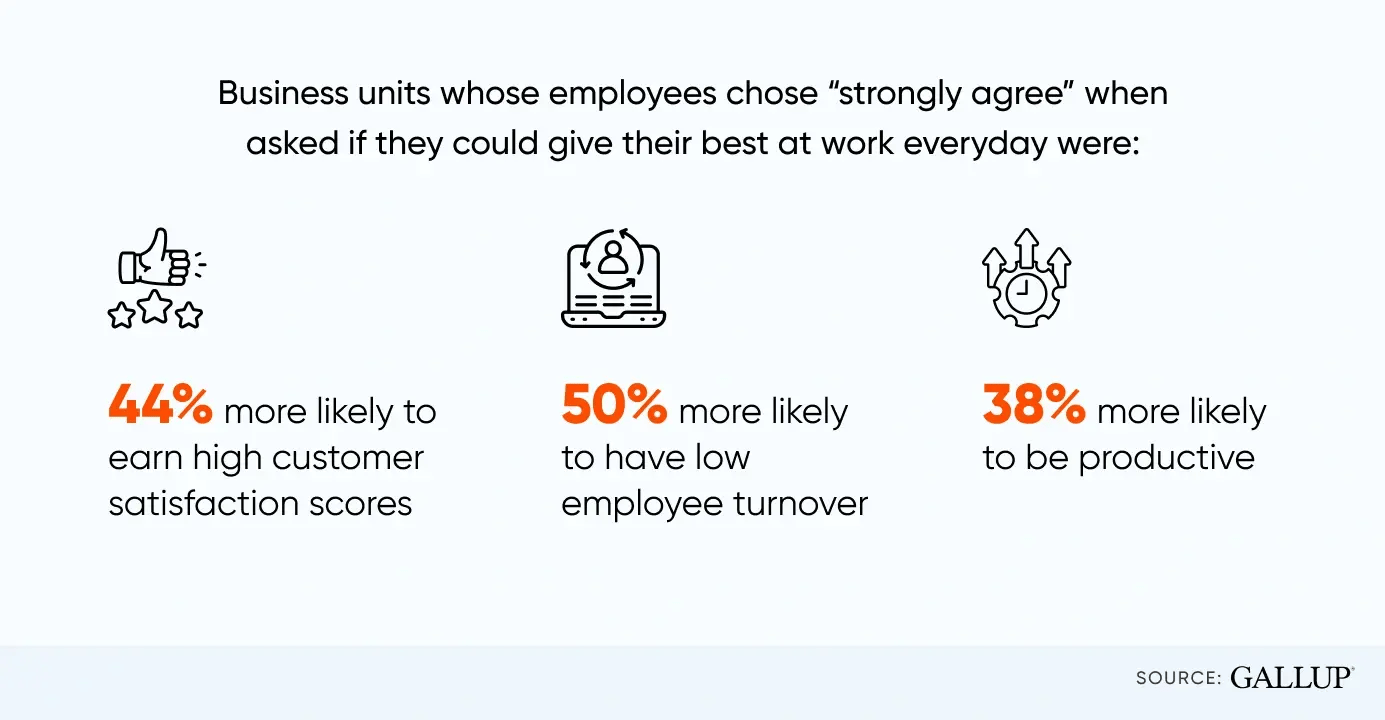
Implementing High-Performance Coaching In Your Agency
"First and foremost, there has to be an acknowledgment about the gap that exists between a talented individual and their performance from the person's end," shared Mridula.
Agency leaders who want a change for the better can choose high performance coaching.
Identifying the Need and Setting Goals
The first step in implementing high-performance coaching is to assess where your agency currently stands. Identify areas where employees may be underperforming or where there’s potential for growth. Once the need is clear, set specific, measurable goals for what you want to achieve via coaching. These goals should align with both individual development and overall business objectives, ensuring that the coaching efforts directly contribute to the agency’s success.
Selecting The Right Coach Or Coaching Program
Choosing the right coach or coaching program is crucial for the success of your initiative. Look for coaches who have experience working with the digital agency space and who understand the unique challenges and dynamics of this environment. The right coach will not only possess the necessary skills and knowledge but will also be a good cultural fit for your organization. Whether you opt for an internal coach, an external expert, or a structured coaching program, ensure that the approach resonates with your team and aligns with your agency’s goals.
Creating A Supportive Environment For Coaching
For high-performance coaching to be effective, it’s essential to foster an environment that supports and encourages growth. This means cultivating a culture where feedback is welcomed, and employees feel safe to discuss their challenges and aspirations. Leaders should actively promote the coaching process, demonstrating their commitment to the development of their teams. Providing the necessary resources and time for coaching sessions, and celebrating the progress made, will further reinforce the importance of this initiative.
Measuring The Success Of Coaching Initiatives
To gauge the effectiveness of high-performance coaching, it’s important to track the progress that reflects both individual and organizational growth.
- Openness to Feedback: A significant indicator of success is the openness with which employees give and receive feedback. In a thriving coaching environment, team members won’t hesitate to share constructive feedback, even with managers or senior leaders.
- Increased Engagement Scores: As employees feel more supported and valued, engagement scores should rise. Higher engagement typically correlates with better performance and job satisfaction.
- Planned Leave and Transparency: Another sign of a positive coaching impact is the increase in planned leave. When employees feel comfortable sharing the real reasons behind their leave requests, it indicates a high level of trust and transparency within the team.
- Enhanced Team Camaraderie: As coaching fosters better communication and deeper relationships, you should see an increase in team camaraderie. Stronger relationships among team members can lead to more effective collaboration and a positive, fulfilling work environment.
- Ownership and Business Foresight: Employees who have undergone high-performance coaching often show greater ownership of their tasks. They also develop better business foresight, understanding how their work contributes to the agency’s overall success.
- Business Growth and Revenue: Ultimately, the success of coaching should be reflected in the agency’s bottom line. As employees perform better and contribute more effectively, the business should experience growth, with higher revenue as a clear indicator of the program’s success.
High-performance coaching addresses the root causes of underperformance, creating an environment where talent thrives.
By investing in your team’s development, you ensure that your agency not only meets but exceeds its business goals.


Rohit Ganguly, Content Marketer
Rohit is a content marketer first and a YouTuber second. He loves to interact with animals, feed them, clean his apartment, and spend time with friends and family. Curious by nature, he also enjoys literature, movies, meditation, and calligraphy.

 We respect your privacy. Your information is safe.
We respect your privacy. Your information is safe.

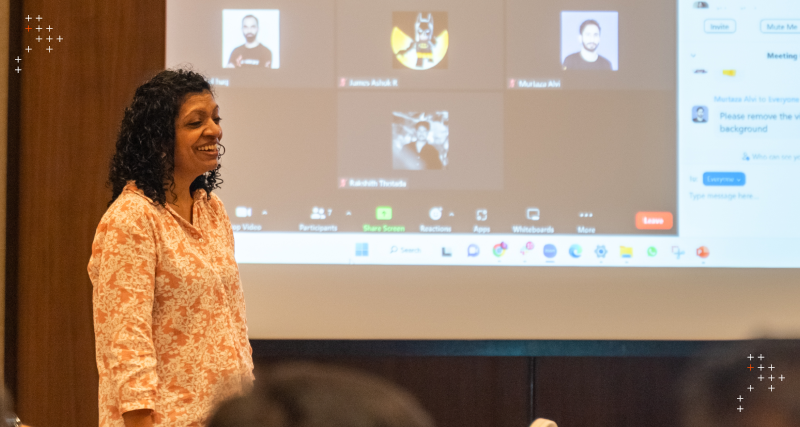

Leave us a comment